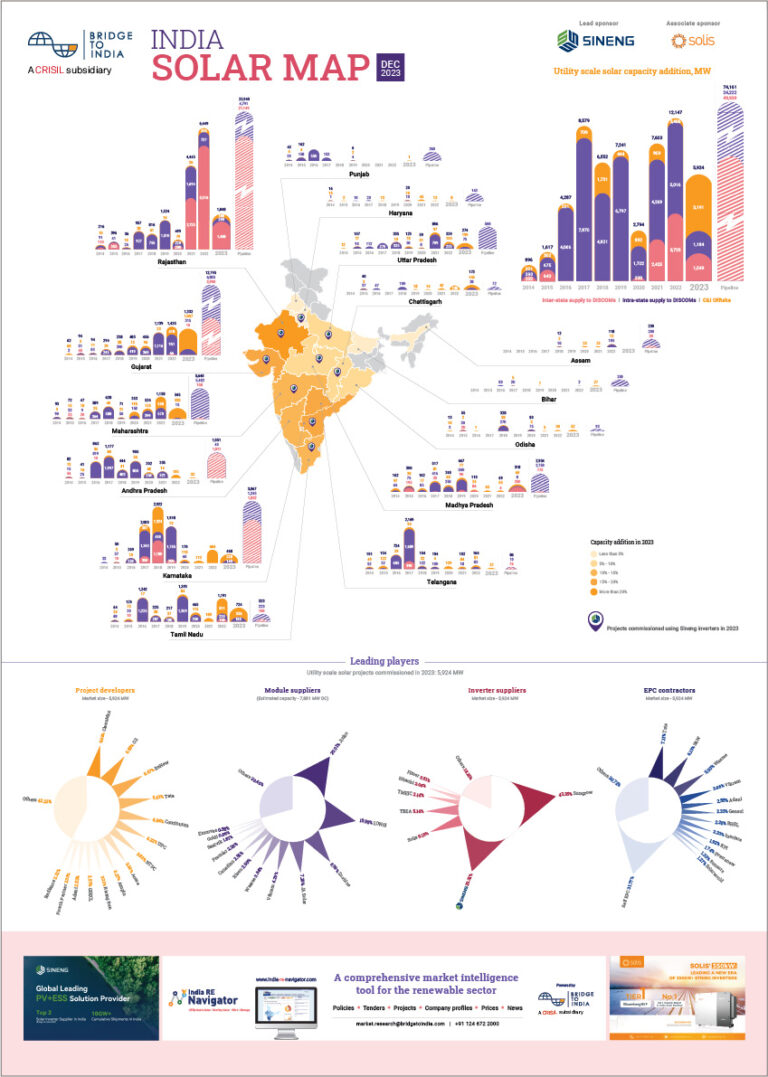MNRE recently advised SECI to revise ceiling tariff downwards in new utility scale solar tenders to INR 2.68 (2.50 without any safeguard duty), a reduction of over 8% on the prevailing level of INR 2.93. The recent 10,000 MW integrated manufacturing tender also has a lower ceiling tariff of INR 2.75 (without any safeguard duty). We also understand that SECI has been writing to the DISCOMs promising supply of solar power to them at a price of INR 2.50.
- MNRE’s price expectations are in conflict with market reality;
- Because of the wrong pricing signal, the DISCOMS are not prepared to buy power at higher prices, leading to the risk of more tender cancellations;
- Falling price expectations are discouraging technological innovation in the sector as well as delaying attempts to integrate variable RE power into the grid;
MNRE is trying to mistakenly force prices down in a bid to boost demand. In the last three pan India auctions conducted by SECI and NTPC, aggregating to 7,000 MW, weighted average tariff came out at INR 2.59. These auctions allowed full pass through of safeguard duty and hence provide a useful benchmark. MNRE is not only ignoring market forces but also seems unmindful of rising costs facing project developers.
Figure: Solar auction results in 2017 and YTD 2018, INR/ kWh

Module prices have fallen by more than 25% recently but this fall was already factored in the recent bids. On the other hand, many of the other adverse movements have not possibly been factored in these tariffs – INR has depreciated against USD by more than 10% over last year, interest rates have climbed up, transmission challenges are rising and commodity price volatility is also up.
The government’s intense focus on pushing prices down is potentially very harmful for many reasons. It is sending a wrong pricing signal to power purchasers (DISCOMS). They are not prepared to buy power at higher prices and it is not a surprise that an increasing number of tenders are being cancelled after auctions are completed. Second, we fear that risk-reward equation for project developers, already unfavourable, is getting more precarious. Bidding remains extremely competitive with developers prepared to make speculative assumptions to win projects. Forcing prices lower in such a market leads to a higher risk of unviable projects, implementation delays and poor quality – already formidable challenges in the sector.
Finally, and most importantly, the price emphasis is not only discouraging technological innovation in the sector but is also delaying attempts to integrate variable RE power into the grid. It is the main reason why, for example, storage has failed to take off in India. As tenders are evaluated only and only on price, the developers understandably prioritise producing maximum power at the lowest possible price, even if it is produced at the wrong time of the day. There is little attempt to vary the power generation profile through the day by altering project design or by using trackers, for example.












